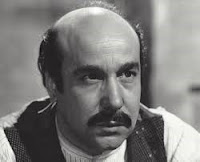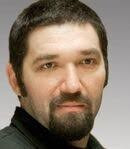A book rediscovers the black-legged western: when the
Wild West was closer than ever
'American Western in Spain', by Carlos Aguilar, is a
journey through the literary and cinematographic universe of the 'far west'
genre in our country.
El Espanol
Jesús Palacios
March 13, 2025
Black-legged western
Apart from the international Western film production
industry on national soil, the truth is that the western was, in those decades
of the second half of the twentieth century, one of the most popular genres, if
not the most popular and loved by Spaniards.
Now that Western series and films are just one more of
the many and infinite options of audiovisual entertainment, far below the
popularity of other trends such as thrillers, fantasy or science fiction, it is
hard to believe, but what the middle and lower classes of the late Franco
regime and the Transition consumed and devoured were films, television series,
comics, bags and novels from the Wild West.
[The Cartwright
family of 'Bonanza', one of the Western series that conquered the Spaniards]
The television was in full gallop, Indians and cowboys,
shootouts and saloon fights. ‘Bonanza’, ‘Wagon Train’, ‘The High Chaparral’,
The Rifleman’, ‘The Virginian’, ‘Zane Grey Theater’...
They would give way to variations of all kinds: family
and sentimental such as ‘Little House on the Prairie’; martial arts such as
‘Kung Fu’; on the verge of science fiction and Bondian thriller such as Jim
West; crime mystery such as Hec Ramsay; action and humor such as Costa Bárbara;
war and historical dramas and soap operas such as Norte y Sur or Centennial and
with protest overtones such as “Roots”. The Spanish television viewer was more
familiar with the history and legend of the American Frontier and the formation
of the United States than with that of his country.
All this contributed to the emergence of a prosperous
industry of the popular Western book, the famous and infamous novelettes "de
a duro", written by Spanish authors who adopted sonorous Anglo-Saxon
names, among others: Silver Kane (Francisco García Ledesma), Curtis Garland
(Juan Gallardo Muñoz), Frank Caudett (Francisco Caudet Yarza), Clark Carrados
(Luis García Lecha) or Keith Luger (Miguel Oliveros Tovar), with the exception
of the most prolific and specialized Marcial Lafuente Estefanía.
While the former cultivated the entire spectrum of
popular literature, from horror and science fiction to crime or espionage,
Estefanía linked her name to the Western, being possibly one of the most widely
read Spanish writers in our history.
[Marcial Lafuente
Estefanía, the most prolific and widely read Spanish writer in the West... and
everything else.]
If it is worth highlighting Silver Kane's novels among
the best and most original, to the point of being one of the favorite authors
of Alejandro Jodorowsky, who prefers him (and neither he nor I joke) to
Cervantes, over all of them reigns the figure of José Mallorquí. Creator of El
Coyote, a character who was also one of the first to star in Spanish westerns
filmed in Mexico in the mid-fifties, thanks to the pioneer Joaquín Luis Romero
Marchent, Mallorcan, translator, writer, editor and scholar, replied to El
Zorro with a similar animal but of a different species: a Spanish vigilante who
defends the native Californios from the evil Yankees.
The setting of El Coyote's novels, as well as other
series by the author, such as Three Good Men or Lorena Harding, is
frankly careful and is so convincing literary and historically as to place his
work and personality above the wild territory of the pure and hard bag.
Of course, we should not confuse this literary phenomenon
of the Spanish West with genuine American western literature, which was also
published successfully at that time, both in specialized collections, such as
those of Molino or Toray, and in prestigious publishers such as Plaza y
Janés, Planeta, Caralt, Noguer, etc. Anyone who wants
to approach these American historical and adventure novels, often of great
literary level, awarded in some cases with prizes such as the Pulitzer, will do
well to take a look at the Frontera collection of the Valdemar publishing
house, directed by Alfredo Lara.
In any case, the idiosyncrasy of the mythical West, with
its abstract and archetypal qualities, penetrated the national spirit so much
that it was not only manifested in some cinematographic westerns of remarkable
value, such as “The Taste of Vengeance” (1963), “Dollars for a Fast Gun”
(1964), “Seve from Texas” (1966), “Fedra West” (1968) or the brutal Condemned
to Live (1972), Tarantino's favorite, who pays homage to and plagiarizes it in
“The Hateful Eight” (2015), all of them signed by Joaquín Romero Marchent, but
also in the westernization of the genre of Andalusian bandits and the like.
[Sancho Gracia as
Curro Jiménez, the epitome of the generous bandit in the key of an Andalusian
western]
Sancho Gracia as Curro Jiménez, the epitome of the
generous bandit in the key of an Andalusian western
Joaquín Romero Marchent would direct several of the best
episodes of the ‘Curro Jiménez’ TV series (1976-1978), although long before
that the spirit of the western and its characters, situations and motifs had
permeated titles of this subgenre as fundamental as the foundational “Amanecer
en Puerta Oscura” (1957) by José María Forqué or “Llanto por un bandido” (1964)
by Carlos Saura.
It is not surprising that another of the creators of the
popular Curro Jiménez played by Sancho Gracia, Mario Camus, previously directed
“The Wrath of the Wind” (1971), a film that brought the language and
stylistic parameters of the political and red spaghetti western of Corbucci or
Sollima to the Valencian countryside of the early twentieth century, taking
risks, with a script based on an original story by Manolo Marinero, to put
quotes from Buenaventura Durruti in the mouth of one of his characters,
murdered on the orders of the local cacique. A daring that would go unnoticed
by the censors thanks to the western wrapping of what is in reality a political
and social manifesto.
But with his move to the small screen, Curro Jiménez
meant, without a doubt, the swan song. Both for generous bandits who are
increasingly out of fashion and for a genre, the western, that also did not
seem to say much to the young generations raised with galaxies, giant sharks,
superheroes and kaijus. However, the strong bond of brotherhood between the two
worlds is certified, at the wrong time but with effort, by Enrique Urbizu's
“Libertad” (2021) that applies Western revisionism in the style of Peckinpah or
Arthur Penn to the Andalusian bandit.
The twilight of the Spanish West
The West was rapidly abandoning the Iberian lands, the
movie theaters and the collective imagination with such picturesque productions
as “The Valley of Gwangi” (1969) by James O'Connolly, with Ray Harryhausen as
the genius of stop motion and the giant monsters behind it, a Weird Western (or
strange western, which it is) where we can witness the show of a group of
cowboys riding with dinosaurs through the masses of Las Majadas de Cuenca and a
tyrannosaurus destroying its cathedral.
Or like “Man in the Wilderness” (1971) by Richard C.
Sarafian, a superior version of the same story told by Iñárritu's pompous “The
Revenant” (2015), where Richard Harris, after surviving a reluctant bear,
resolutely pursues John Huston, who is dragging a boat with a cannon included
through the mountains of Covaleda, in the province of Soria.
['The Valley of
Gwangi' (1969), hunting dinosaurs in the West... of Cuenca]
The towns of the West of Almeria or Sioux City in Gran
Canaria, apart from some advertising or television filming, were left for
tourism and events. The Americans, although it took three decades, in the end
they followed the example of Berlanga's “Welcome Mr. Marshall”, with whom
Carlos Aguilar begins his chronicle of the American Western in Spain, and they
left.
In a fit of nostalgia, Álex de la Iglesia, a defender of
lost causes, dedicated his feature film “800 Bullets” (2002) to this world
forgotten by time, which is not among the best in his filmography, although at
least it made known to the new generations a marginalized and despised history.
The story of an Old West that for almost forty years took
root in a much older Spain, while it went from dictatorship to democracy
although at the same time it lost, paradoxically, a powerful, varied and
economically viable entertainment industry, which lifted out of poverty for
years usually depressed regions such as Andalusia or the Canary Islands.
Of course, it was not the fault of democracy, although
Pilar Miró did her thing in the eighties, but of a radical change in the
narrative and industrial models of cinema in general and Hollywood in
particular. Of course: the blindness of the critics had something of a crime.
[Spanish actress
Diana Lorys with Broderick Crawford in 'Texas Kid' (1966)]
Spanish actress Diana Lorys with Broderick Crawford in
'Texas Kid' (1966)
As the legendary actress Diana Lorys says in her prologue
to Aguilar's book: "Many film professionals and all intellectuals
disdained these films. They committed an enormous injustice, in a contempt that
splashed the actors who worked in them. It was a historical mistake, because
those Western films (...), were made with a lot of skill, with application,
with desire and illusions. That genre cinema was very dignified, it deserved
respect, although not all its films were good, as is logical."
Despite the fact that it is resurrected punctually and
constantly, the western is no longer and cannot be the king genre. Now it is no
more, and no less, than one of the many subgenres that are part of the
business, thanks to the efforts of old-fashioned guys like Kevin Costner or the
almost centenarian Clint Eastwood and others as peculiar as David Milch, Taylor
Sheridan, Mark L. Smith or Graham Yost.
With greater or lesser fortune, the latter have managed
to make series such as ‘Yellowstone’ (2018-2024) with all its spin-offs,
‘Deadwood’ (2004-2006), ‘Once Upon a Time in the West’ (2025) or ‘Justified’
(2010-2015, plus a final season in 2023), audience successes.
However, Indians and cowboys have fled from the popular
imagination. Children no longer play with plastic colts and Winchesters, or
with pretend bows and arrows, or with forts or wooden horses. In Spain they
don't make Westerns. Exceptions such as “800 Bullets” or the ‘Zorro’ series
only confirm with a certain pyrrhic twilight aftertaste a reality that seems
definitive and that Trump's arrival to power will only underline.
That is why it is so important that books such as this
American Western in Spain by Carlos Aguilar or the nostalgic documentary
“Unearthing Sad Hill” (2017) by Guillermo de Oliveira, remind us that the Old
West was once as ours as ham, flamenco or bullfighting. All of them today, so
politically incorrect.
























































